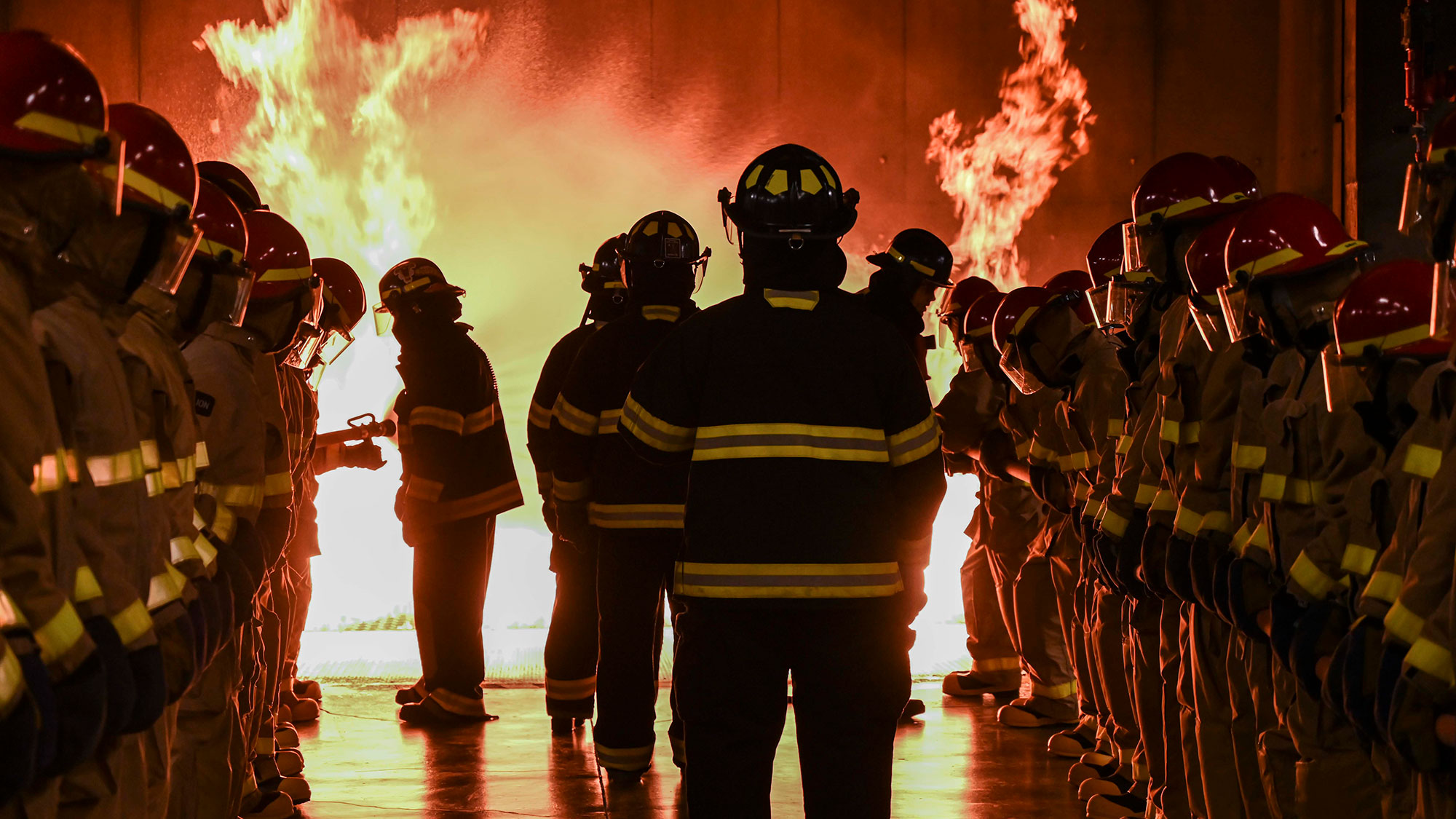

Later this year, the Department of Homeland Security hopes to provide a new prototype helmet for firefighters, a piece of gear designed to meet modern challenges in one flexible, composite form. Firefighting is dangerous work, even when it’s narrowly focused on fires, but as first responders firefighters handle a range of crises, including ones where the immediate threat may be more from firearms than flame. To meet that need, the Department of Homeland Security’s Science and Technology directorate is funding a new, all-purpose helmet for firefighters that will include both protection from bullets and fire.
“Firefighters are increasingly called upon to respond to potentially violent situations (PVS), including active shooters, armed crowd and terrorist incidents, hazardous materials mitigation, and disaster response,” reads a Homeland Security scouting report published in July 2019, outlining the needs and limits of existing helmet models. “Currently, firefighters must carry one helmet for fire protection and one helmet for ballistic protection, which creates a logistical burden when firefighters must switch gear on the scene.”
Relying on two distinct helmets for two distinct kinds of response is not an efficient setup, and it means that if a firefighter is responding to one kind of emergency, like a shooter, but then a fire breaks out, the first helmet offers inadequate protection for the task. While dealing with shooters is and remains the primary responsibility of law enforcement, rescuing people from danger that might include a shooter is in the wheelhouse of firefighters, and so being able to do that safely despite bullets flying would improve their ability to rescue.
Beyond survivability from both bullets and fires, Homeland Security evaluated helmets for how well they could incorporate self-contained breathing apparatus (SCBA) gear, fit integrated communications, and be able to either project light or, if lights are not baked into the helmet design, easily mount and use lights. The breathing apparatus required for indoor firefighting must work cleanly with the helmet, as without the outside air circulation like in wildfire fighting, firefighters are tasked to venture into smoke-filled rooms, sometimes containing smoke from hazardous materials. Communications equipment allows firefighters to stay in contact despite the sounds and obstructions of a building on fire, and lighting can cut through the smoke and blaze to help firefighters locate people in need of rescue.
The National Fire Protection Association sets standards for fire gear, and the ballistic standards chosen are from the National Institute of Justice’s Level 111A, which includes handgun bullets up to .44 Magnum but does not cover rifle ammunition.
[Related: A new kind of Kevlar aims to stop bullets with less material]
In the 2019 evaluation, eight helmets met the standard for fire protection, while only one met the standard for ballistic protection. The fields of fire and ballistics protection have largely been bifurcated in design, which is partly what initiatives like funding through the Science and Technology Directorate are built to solve. In the same 2019 evaluation of existing models, no one existing helmet offered both ballistic protection alongside the other firefighting essentials sought in the program. These designs all ditch the wide brim and long tail traditionally found in firefighting helmets, as the protection offered by the helmet’s distinctive shape can be met through other means.
“The NextGen Firefighter Helmet will be designed with a shell that can absorb energy during impact and rapidly dissipates it without injuring the skull or brain. While the current materials used in both firefighter and military helmets are inadequate for the temperature and ballistic protection being sought, they provide a useful blueprint for future innovation,” said DHS in a release. “For example, Kevlar fiber has a melting point of 1040 °F and has proven highly effective in ballistic helmets and body armor. Similarly, polyester resins used in current firefighter headgear can have glass transition temperatures (the point at which it becomes hard and brittle) as high as 386.6°F. The idea is that thermosetting resins can be reinforced with Kevlar fiber, creating a shell that meets both the thermal and ballistic protection requirements of the NextGen Firefighter Helmet.”
Other important design features will be ensuring that the finished product doesn’t weigh too much or strain the necks of wearers too badly, as protective gear that injures wearers from repeated use is not helpful. That means a large-sized helmet that ideally weighs under 62 ounces, and in a medium size is under 57 oz. The helmet will need to be simple to put on, taking less than a minute from start until its secure in place.
DHS expects the prototype to be ready by mid-2023, at which point it will conduct an operational field assessment. Firefighters will evaluate the helmet design and features, and see if what was devised in a lab and a workshop can meet their in-field needs. After that, should the prototype prove successful, the process will be finding commercial makers to produce the helmets at scale, creating a new and durable piece of safety gear.
